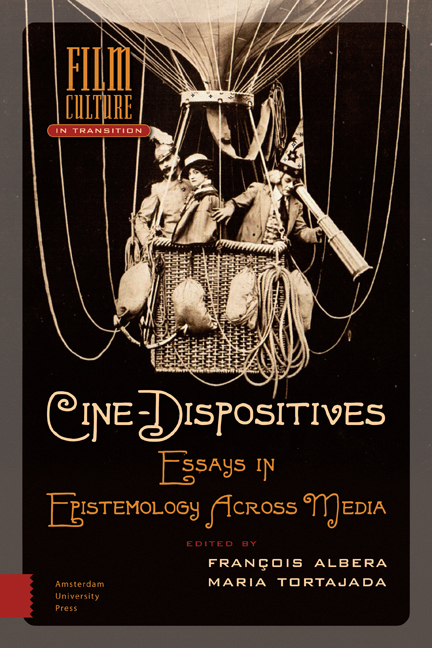Archaeology and Spectacle: Old Dispositives and New Objects for Surprised Spectators Stopping by the Museum
Published online by Cambridge University Press: 10 February 2021
Summary
To examine the notion of the dispositive and identify its place in contemporary practices at the intersection of two institutions, Cinema and the Museum, this text proposes a progression through a few individual cases, with the outlines of a study. This may appear as lacking in discipline with regard to the call for papers for the conference “Dispositifs de vision et d’audition” (Université de Lausanne, May 29-31, 2008), which was the first step in the present work. The call underlined how the study of a series of isolated cases would risk “perpetuating the ambiguity of encounters in which epistemological questioning remains peripheral to descriptive, factual presentations that do not allow us to get the measure of this new configuration of knowledge involving our objects.” For my part, I see case studies as a rather necessary approach when it comes to analyzing contemporary trends and more particularly the rich, booming trend of the cinema “going to the museum.” A second step consists in analyzing how the bounds of the cinematographic institution may more generally be exceeded; this text constitutes an initial benchmark in this research program.
Attraction (as Prism or as Shutter)
A theoretical category, that of attraction – which was central to my doctoral Dissertation – provides a viable point of entry to examine the new media configurations exceeding the institution of film and putting into play the now unalienable relations between cinema and digital technologies (including in the specific context of the exhibition). I developed the category out of Eisenstein's canonical texts and the debates on the new historiography on early cinema, but also from a set of other writings, Shklovsky's writings on poetic language and literary theories of description, the writings of the school of photogeny or the debates on distanciation in the theater. “Attraction” allowed me to examine things in great detail and to think of cinema from a standpoint distinct from its capacity for storytelling. I studied its original qualities as a seeing machine, one that generated a new, fragmentary, astounding way of seeing – and as a result engendered a true epiphany of the world: a machine producing vision and making it possible to look at things, but also as a machine to see, which early on (as well as today, but in a different way) was the thing to see.
- Type
- Chapter
- Information
- Cine-DispositivesEssays in Epistemology Across Media, pp. 379 - 392Publisher: Amsterdam University PressPrint publication year: 2015

